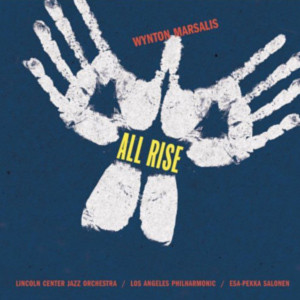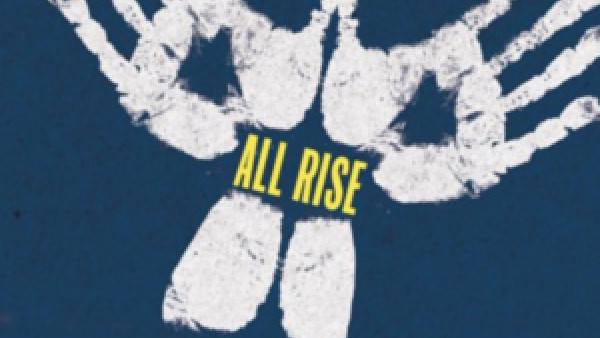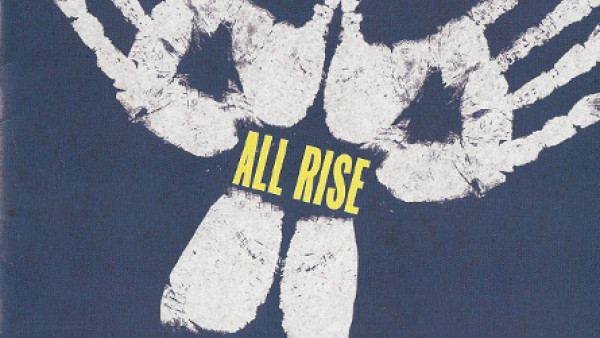United in Music
Is there really only one Wynton Marsalis? Look in one direction and there he is, leading the Lincoln Center Jazz Orchestra through a program of jazz classics. Look in another, and he’s in a studio recording a Haydn trumpet concerto.
But wait, here he is again, at Lincoln Center, spearheading a program to build a 100,000-square-foot education, performance and broadcast facility for Jazz at Lincoln Center at Manhattan’s Columbus Circle. He’s also working with thousands of young musicians via the Jazz for Young People concert series and the Essentially Ellington high school jazz band competition. And later this month, he’ll be fronting the Lincoln Center Jazz Orchestra in “United in Swing,” a tribute to the big band era, in concerts in Beverly Hills and Cerritos.
It is all the same Wynton Marsalis, and it doesn’t stop there. Tonight, at the Hollywood Bowl, he teams with old friend Esa-Pekka Salonen in the West Coast premiere of his composition “All Rise,” an ambitious evening-long effort for symphony orchestra, jazz and chorus that reaches across styles and genres, from jazz and blues to classical and world music.
In a career that has flowed in so many directions, it is this massive work—which will be performed by the Los Angeles Philharmonic, the Lincoln Center Jazz Orchestra and a 100-voice choir—that represents the fullest expression to date of his far-reaching interests. A few days after the Bowl performance, it will be recorded for Sony by the same musical collective.
“All Rise” was commissioned by the New York Philharmonic’s millennium initiative and premiered at Lincoln Center in December 1999.
Now Marsalis brings to Los Angeles the nexus of a cross-continental connection that shifts the Lincoln Center Jazz spotlight to Southern California and puts Salonen in the unusual role of conducting a work teeming with jazz elements. (But well within his range of experience, he notes, recalling his early days as a French horn player, performing Gil Evans arrangements with a Finnish jazz band.)
It started in February, when Marsalis called Salonen, music director of the Los Angeles Philharmonic; they had worked together in the early ‘80s when they made an album of classical French trumpet concertos and other works.
“We knew each other well,” Salonen says. “Out of the blue, he just called me and said, well, there’s this piece and he would like me to conduct it, possibly record it, and so forth, and I said OK. We’re good enough friends to make it that easy.”
Marsalis turned to Salonen in part because of that continuing friendship. They have recorded together on several occasions, are close in age (Salonen is 43, Marsalis turns 40 in October) and logically connect as important, relatively youthful East Coast-West Coast musical trendsetters. And the pairing gives Marsalis the opportunity to perform the work at the Hollywood Bowl—a particularly felicitous setting for a large-scale composition—and to finally record the work, collaborating again with Salonen and the L.A. Philharmonic. For Deborah Borda, managing director of the L.A. Philharmonic, the performance is a confluence of her current and past lives: She moved to L.A. in 1999 from a similar post at the New York Philharmonic.
“I’m very familiar with the situation, since I negotiated the contract for the commission when I was with the New York Phil,” Borda says. “And the agreement was that if the New York Phil could not bring forces to bear to make the recording within, I think, three years, Wynton was free to record it someplace else. That’s a fairly typical arrangement, but we’re really pleased that it’s worked out this way, to our benefit.”
If Marsalis actually did refer to the work as “this piece” in his conversation with Salonen, it would have been a characteristically understated description of what is actually a large-scale, 100-minute composition in 12 movements. Six months were invested in “All Rise,” and it was all Marsalis’ conception, without aid from orchestrators.
“Are you kidding, man?” he says. “I damn near killed myself. I never worked on anything like that. I’d get up at 4 in the morning, and I swear to you I’d be sitting in the same seat, in the same position, until like 2:30 in the afternoon. I’d get up, eat for about an hour, then I’d sit back down until like 11 o’clock. Then I’d take a break or something and take out the music again until about 2. And then start all over again.
“It was a vicious cycle,” he says laughing, “and it went on for six months.”
Getting Marsalis started on the piece, however, was almost as difficult as the process of composition. And it wasn’t because of the time consumed in the symbolic cloning of himself in so many different areas.
“Kurt Masur of the New York Philharmonic had been asking me to write a piece for 10 years. And in the beginning it always seemed real abstract to me as to why he would ask me, since I was barely writing music for a jazz quintet then. So I thought he was just joking. But when I saw him in the mid-‘90s, he said, ‘Man, are you still afraid to write for the Philharmonic?”’
Borda agrees, recalling numerous efforts to reach out to Marsalis when she was with the New York Philharmonic. “Kurt and I told Wynton we really wanted to work with him,” she says, “and he kept saying he wasn’t sure and he wasn’t ready. So we cooked up a project which just worked so well that it actually sealed the deal. It was a collaboration on ‘Peer Gynt,’ doing the Grieg with the Philharmonic on the first half of a program, and then the Ellington version with Wynton and the [Lincoln Center Jazz Orchestra] on the second half. It was really fun, everybody enjoyed it, and when the week it was over, Wynton said, ‘OK, I’m ready to do something.”’
Marsalis remembers it a bit differently. “I knew,” he says, that I had to learn how to orchestrate and, especially, to write for strings, since I never really studied composition. I always felt comfortable playing classical trumpet works, but composition—man, that was a whole different thing.
“So, I started in 1995. I wrote a string quartet [‘At the Octoroon Balls’]; I wrote that piece based on Stravinsky to learn how to address woodwind scoring. And I wrote a ballet [“Sweet Release”] for the New York City Ballet. After that was when I started working on ‘All Rise.”’ (Marsalis modestly omits the fact that, during his self-educating process, he became the first jazz artist to be awarded a Pulitzer Prize, in 1997, for his “Blood on the Fields.”)
“All Rise” was first heard at Avery Fisher Hall in New York City. Reviews were generally laudatory, with the New York Times describing it as “appropriately large … and appropriately accomplished,” and the Chicago Tribune calling it a work that addresses “the sweep of human musical expression.” The work has subsequently been performed in Berlin and Prague.
Capturing that “sweep” was a task that Marsalis addressed with a carefully organized plan of attack.
“I started out with a meticulous level of detail,” he says. “I wrote out a huge chart for the entire piece. In the chart, I determined where I wanted certain musical forces. Then, as I was writing, I would just look at the chart and start to make adjustments.
“Like I would say, ‘OK, when I get to Movement 7, I want the choir to be in here, and then I want everybody to play.’ And I had to be careful about balances too. The jazz band plays a lot louder than the orchestra, and the rhythm section too. The cymbals, for example, can overpower the whole string section because of their [sound] frequency.”
Equally important, Marsalis wanted to save the enormous potential power of the full collective ensemble for spots in which he planned to make his most important dramatic points.
“I really saved everybody playing together for a long period of time until the very end,” he says, “where the choir is singing, ‘Look beyond.’ Because when they say that, when they say ‘Look beyond,’ the ‘beyond’ is where everybody’s together.”
That final passage wraps a piece whose 12 movements metaphorically echo the 12 bars of the blues—the single most important subtext in most of Marsalis’ music, whatever the genre. Starting with an opening four sections that musically illuminate the passages from birth through play through love and self-awareness, “All Rise,” according to Marsalis, “celebrates togetherness and ascendance” as well as the “diversity and oneness of things.”
When Salonen first saw the score, he was surprised by “the sheer size of it.” Works of this scope don’t turn up every day in the postmodern world of composition. “I knew it was a piece of epic length,” he says, “but this is a mammoth undertaking. The scale is symphonic, to say the least, and the ambition is very high. And I think he’s created something that is very unique in the world of jazz.” Unique in large measure because Marsalis reached beyond the worlds of jazz and classical music in gathering his resources for a composition that relies heavily upon many colorful textures and a structure founded on the sort of repetitions found in the blues and popular song.
“I tried to use a lot of what I knew,” he says, “but I reached in other directions, as well. I used a lot of open harmonies like in early Greek music, and I always use the harmony of the blues, of course. I used chordal harmonies based on fourths, and I used triadic harmonies in the fugue section.” Such thinking reflects Marsalis’ desire to have the work express the 21st century search for “global community,” for a time when, he says, “we will truly be at home in the world.”
Salonen sees “All Rise” as a 21st century example of a process that has always been present in classical music—a revitalization of established forms with sounds, rhythms and ideas from the songs and dances of folk and popular music.
“If you think of Bach and Handel, the courantes and minuets, this was dance music of the day,” he says. “So it’s by no means a new idea to bring in elements like the blues and so forth. There was a sort of short, very biased period in the history of Western classical music when people wanted to see classical music as something sacred and remote, worked by lonely geniuses who were essentially different from the rest of mankind. But I don’t think this has ever been true. I think there has been a lot of cross currents always between various genres.”
This all leads to the question of whether the Philharmonic might explore other works with genre-bending qualities similar to “All Rise.”
“Repertoire, that’s the key word,” Salonen says. “It would be nice to do collaborations with other people from different genres, but the question always is: What can we play, what is the repertoire? Quite often if you collaborate just for the sake of collaborating, the results can be less than interesting. There has to be a compelling artistic reason why these two disciplines should coexist in this way at this moment, and there aren’t many works of that kind.
“Once at the Bowl, perhaps 10 years ago, I did a concert with Arturo Sandoval, and that was a lot of fun. But the role of an orchestra in Latin jazz doesn’t offer much for the orchestra to do.
“So, as much fun as it was—because Sandoval is fabulous—somehow it would have been just as good without the Philharmonic. And this is most of the problem. You know, you listen to Pink Floyd with the London Philharmonic and you wonder, ‘What on earth is the orchestra doing there, just playing long notes?”’
Salonen is unfazed by the possibility that the importation of Marsalis, the Lincoln Center Jazz Orchestra and “All Rise” might represent a defection of interest in the talents of the Los Angeles jazz community.
“That makes no sense to me at all,” he says. “We have musicians from many different countries in the orchestra, and the conductor has been brought in from Finland. To be territorial in the world of music would be very stupid because it’s against the very nature of the art form.”
Salonen believes that the Philharmonic has a responsibility to local artists. But he sees “All Rise” as a unique project, saying that if a Southern Californian had dropped an equivalently compelling score on his desk, he would have examined it with considerable interest.
“I’m just pleased that the period in which people seemed to want to have this holy image around classical music seems to be over,” he says. “The technique and the vocabulary and the grammar is different between the various genres, but it’s all about music and all about human beings trying to communicate in whatever way possible.”
“‘All Rise” is one of the things we need to do more of at the Hollywood Bowl, to create the special kind of programming that will only exist here, that will be unique to Hollywood Bowl. It’s the perfect thing to do.”
“All Rise” with the Los Angeles Philharmonic, conducted by Esa-Pekka Salonen, the Lincoln Center Jazz Orchestra, the Morgan State University Choir, the Paul Smith Singers and the Northridge Singers of Cal State Northridge. Tonight at the Hollywood Bowl, 2301 N. Highland Ave., Hollywood. 8 p.m. Tickets: $1 to $90. (323) 850-2000.
“United in Swing”: The Lincoln Center Jazz Orchestra with Wynton Marsalis. The Cerritos Center for the Performing Arts, 12700 Center Court Drive, Cerritos. 8 p.m. Sept. 27. Tickets: $60 to $70. (800) 300-4345. Also at the Verizon Music Festival at the Wilshire Theatre, 8440 Wilshire Blvd., Beverly Hills, Sept. 28. 8 p.m. Tickets: $40 to $55. (310) 450-1173.
by Don Heckman
Source: Los Angeles Times



